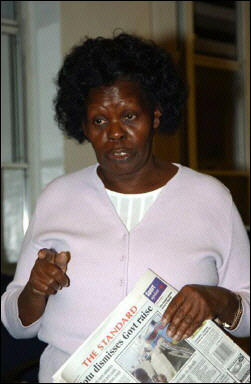
BY JERRY OKUNGU
The relationship between South Africa and Kenya is a perfect example of a study in sibling rivalry. It is a hate-love relationship that seems to have matured into a common fate!
It goes way back in colonial times when the current Kenyan senior citizens like Charles Njonjo ventured there for their higher education.
In the 1970s, when Njonjo was a powerful Attorney General, he invited South African heart surgeon, Dr. Christian Bernard to Kenya against the wishes of then foreign affairs minister.
It was rumoured then that Njonjo would secretly visit South Africa in violation of Kenya’s travel ban to that country. When South Africa abandoned apartheid and embraced democracy in 1992, it was Kenya they chose to showcase their industrial and technological advancement.
Though dubbed ‘Contact Kenya’, the whole of eastern Africa travelled to Nairobi to marvel at the once vilified and mysterious South Africa. Sooner, it was obvious to the political and business class that South Africa was out to dominate the continent that had boycotted it for half a century. Their desire was to overrun the little industrial development that there was in the region and convert sub-Saharan Africa into one great consumer market for their products. After all they were manufacturing everything from sanitary towels to satellite electronics.
In just months of electing Nelson Mandela as South Africa’s first black president, South African goods were everywhere on our streets. In neighbouring Tanzania, they acquired Tanzania’s national airline with direct flights to Dar-es- Salaam and Entebbe. Meanwhile, South African Airways established a daily flight between Nairobi and Johannesburg.
This thirst to dominate business in sub- Saharan Africa saw South Africa’s Castle Breweries build a new beer plant in Kenya to compete with East Africa’s oldest and largest brewery.
Meanwhile when Kenya Breweries tried to export their own Tusker brand to South Africa, it hit a snag. That was the first salvo that South Africa was not ready for competition on their soil but was eager to assist her nationals dominate other markets.
The trade wars that followed saw South African Breweries fold up and leave the country after Castle beer failed in the Kenyan market. This setback was quickly followed by their departure from Tanzania Airways.
Despite these setbacks, Kenya and South Africa have had very cordial relations at least at the country level. Many Kenyans have gone to South Africa in the past decade to work or do business there. The same can be said of many South Africans in Kenya.
This cordial relationship can be attributed to two extraordinary South African ambassadors that have been posted to Nairobi in the last 10 years.
Between 1998 and 2002, Ambassador Griffith Memela was a household name in Kenya. The ambassador travelled widely all over the country making many friends along the way. His handling of the Kenya Breweries-South African Breweries tiff was as diplomatic as it could be. Memela knew what it meant to be a diplomat in situations of straining bilateral relations.
Between 2005 and now, Kenyans have hosted another great South African Ambassador, Tony Msangana, a self-effacing but social diplomat who has been at the forefront of every Kenyan crisis since his posting here.
When Nelson Mandela visited Kenya for two weeks in 2005 with his wife Graca Machel, it was Tony and his mission that made it possible for Kenyans of all walks of life to celebrate the icon’s presence here.
In the last two years, the ambassador has visited many parts of Nyanza province on charity missions. In the process, many communities have adopted him as their son.
When Kenya was in crisis following the 2007 elections, Tony was again at the forefront searching for peace. Through his efforts in conjunction with other eminent persons in Africa, Bishop Desmond Tutu and Cyril Ramaphosa were flown in to come and help.
The tragedy is that both Kenya and South Africa have gone through the African Peer Review process where in Kenya; the burning issues pointed out were inequality, poverty and landlessness.
In South Africa, the glaring problems the APRM found out were poverty, inequality and xenophobia.
A year later, the two countries have erupted in an orgy of violence precisely for the very reasons cited in their APRM reports but which the political leadership in both countries chose to ignore!
Why can’t we read the signs on the wall and avoid hurting ourselves unnecessarily?
jerryokungu@gmail.com



Comments